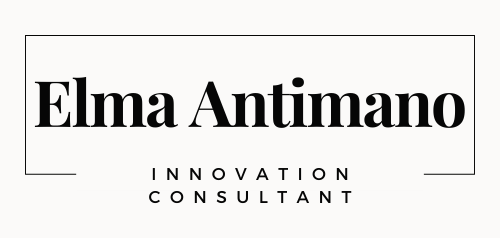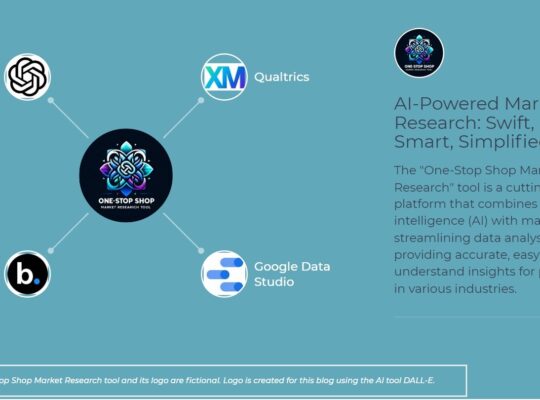What Does a True Consumer Insight Look Like?

The best innovations come from understanding not just what consumers say, but why they behave the way they do. True insights go beyond surface-level observations and uncover unmet needs—often ones that consumers themselves don’t even recognize or articulate.
Many companies talk about being ‘consumer-centric,’ but what does that really mean? Businesses collect surveys, focus groups, and analytics, yet many products still fail. Why? Because data alone doesn’t drive innovation—real consumer insights do.
Why Data Alone Won’t Drive Innovation
Collecting consumer data is easy. Translating it into an actionable insight that leads to meaningful innovation? That’s the challenge.
Many companies mistake data points for insights. A data point tells you that a specific segment of consumers prefers eco-friendly packaging. A true insight, however, reveals why they prefer it—perhaps they feel guilty about waste, struggle with disposal, or are drawn to brands that align with their values.
How to Turn Insights into Meaningful Innovation
1. Go Beyond the Obvious
Consumers may say what they want, but the real opportunity lies in why they want it. However, sometimes even they don’t know the why. That’s why observing behaviors—rather than relying only on direct feedback—is critical.
Having conducted qualitative research across global markets, I’ve seen cultural differences shape how consumers express their needs. In some cultures, consumers may hesitate to give critical feedback, while in others, they are more direct. This is why non-verbal cues, surroundings, and behaviors provide deeper insights.
For example, if a customer says they wish their shampoo bottle were smaller, the real insight might not be about size at all—it could be about convenience, portability, or reducing clutter. Understanding this deeper motivation leads to better product innovation.

2. Challenge Assumptions
A common mistake? Taking consumer statements at face value. People don’t always articulate their real needs, and their actions often tell a different story.
Take the value-action gap—where consumers claim they want sustainable products but don’t always buy them. While they express interest in eco-friendly options, price, convenience, and brand loyalty often take priority at checkout.
Similarly, early surveys on electric vehicles (EVs) suggested that range anxiety was a major deterrent. But real-world behavior showed that most daily commutes were well within an EV’s battery range. The real issue? Lack of charging accessibility, not battery limitations.
This is why combining observational research, behavioral studies, and real-world testing is key to understanding true consumer motivations.

3. Launch Before It’s Perfect—Why Early Testing Wins
The best innovators don’t wait for a ‘perfect’ product. They create minimum viable products (MVPs), test them, and refine based on real-world feedback. Perfection delays progress—real consumer learning happens in the market, not in the lab.
Take Netflix. It didn’t wait for the perfect content catalog before launching its platform. Instead, it tested content formats, licensing models, and pricing structures, refining its strategy based on actual user engagement.
4. Balance Data with Human Emotion
Numbers tell us what is happening, but qualitative insights tell us why it’s happening. Successful innovation requires balancing both.
- Sometimes, we start with qualitative research to explore deep motivations and uncover unmet needs, then validate them with quantitative data to measure the opportunity.
- Other times, we start with quantitative data to identify trends or patterns, followed by qualitative research to understand the underlying reasons behind consumer behavior.
- Refine insights further by using qualitative research to validate and adjust findings from quantitative studies. For example, if data shows a trend in consumer behavior, qualitative research helps uncover the motivations behind it, ensuring that innovations address real needs before final validation.

By integrating both qualitative and quantitative research, companies ensure their innovations resonate deeply with consumer needs.
5. Bridge the Gap Between R&D and Marketing
In my career, I’ve seen how strong collaboration between R&D and marketing leads to breakthrough innovations. But in companies where they work in silos, execution and market success often suffer.
A great example of integration? Apple’s innovation strategy. Their teams work together from the start, ensuring design, functionality, and messaging align seamlessly. The result? Products that are not only technically feasible but also have a strong market appeal.
Too often, different teams within a company—whether R&D, marketing, or product development—work in isolation, leading to misalignment when bringing innovations to market. Successful innovation demands cross-functional collaboration from ideation to launch.
Final Thoughts
Innovation thrives when businesses move beyond surface-level data, observe real consumer behavior, challenge assumptions, and bridge the gap between teams.
I’m Elma Antimano, and my career has been about bridging R&D, consumer insights, and marketing to drive meaningful innovation. From developing globally successful FMCG products to shaping strategies in the EV space, I’ve seen firsthand how deep consumer understanding fuels the best ideas. These are not just theories—I’ve lived and applied them throughout my career, and I firmly believe in their power to transform businesses.

References
- Cypris AI. (n.d.). Learn from the best: How Apple is organized for innovation.
- Wikipedia. (n.d.). Value-action gap..
- Wikipedia. (n.d.). Range anxiety..



